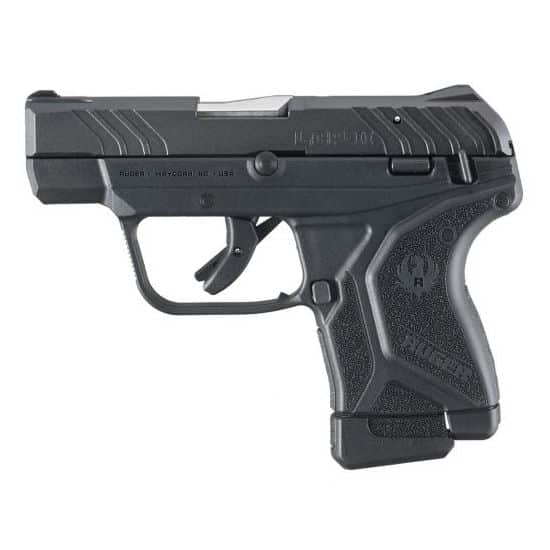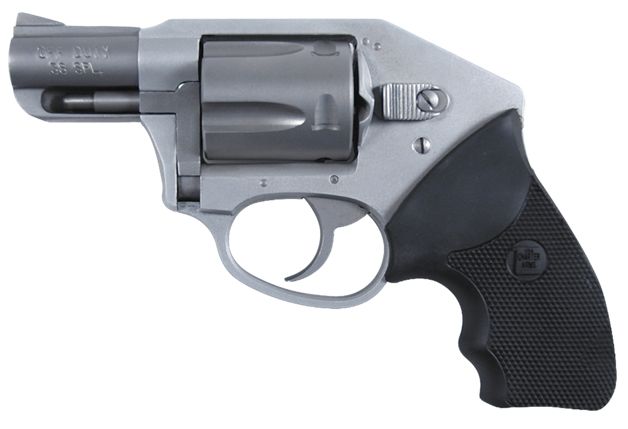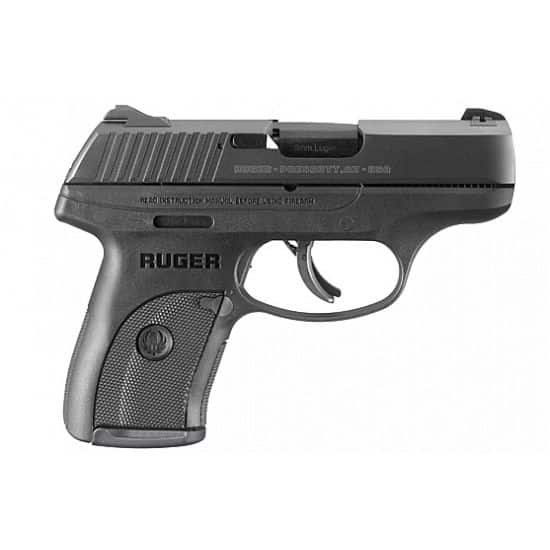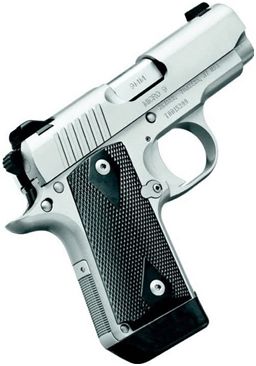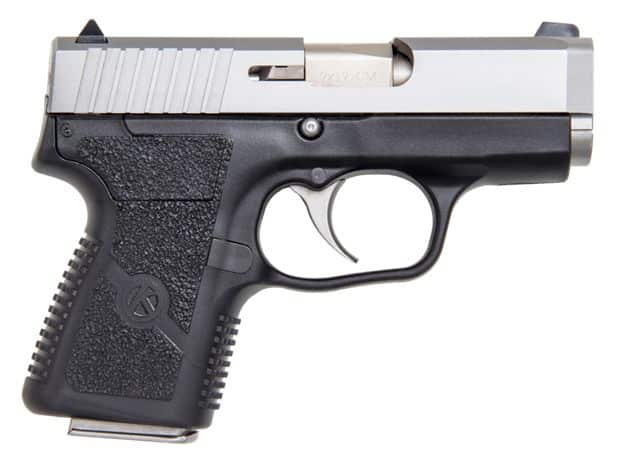At a Glance: Best Pocket Pistol
- OUR TOP PICK: Sig Sauer P365
- Smith & Wesson M&P9 Shield 2.0 9mm W/ Safety
- BEST BUDGET OPTION: Springfield Hellcat OSP FDE
Comparison of The Best Pocket Pistol
| PRODUCT | DETAILS | ||
|---|---|---|---|
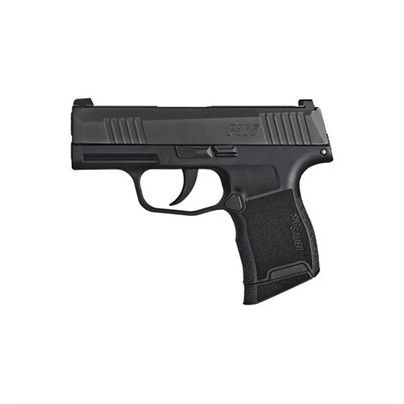
Our Top Pick
|
Sig Sauer P365 |
|
View Latest Price |
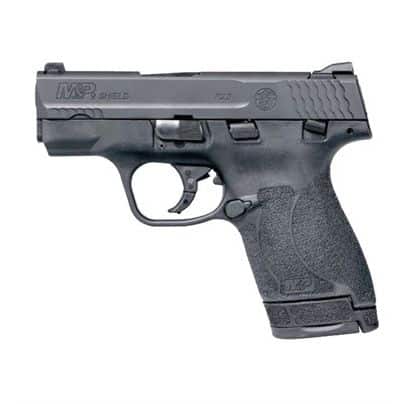
Our Top Pick
|
Smith & Wesson M&P9 Shield 2.0 9mm W/ Safety |
|
View Latest Price |
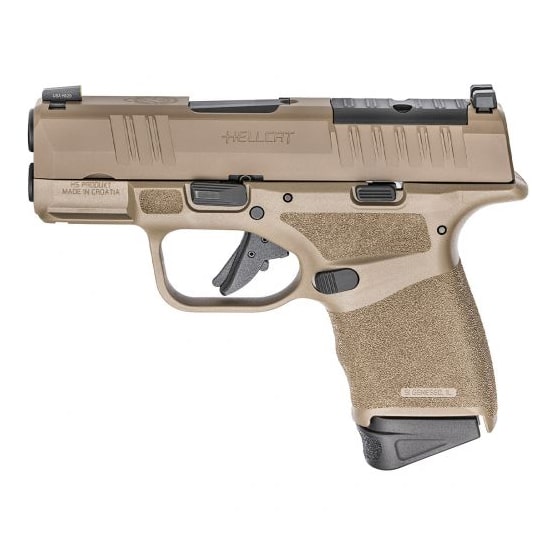
Our Top Pick
|
Springfield Hellcat OSP FDE |
|
View Latest Price |
Everyday carry, or EDC, is a popular phrase used to describe what many shooters consider the essentials. A good knife and an extra magazine are an essential part of your EDC gear; it all starts with choosing the best pocket pistol for concealed carry.
Our Guide to the 8 Best Pocket Pistol for Concealed Carry
A good EDC pistol should be lightweight and reliable. In addition, it has to be comfortable for you to carry based on the caliber, hand size, and body type. We broke down 8 high-quality pistols to help you find your ideal everyday carry centerpiece.
Sig Sauer P365
Since the primary goal of an EDC pistol is personal protection, it is a must that your gun is reliable. That is a big reason why our first entry is the Sig Sauer P365 micro pistol chambered in 9mm. Sig has a long-standing reputation for producing accurate and ergonomic handguns that are built to last, and the P365 fits right in.
QUICK FACTS
- The standard P365 weighs in at under 18 ounces unloaded and has two 10 round double stack magazines.
- It has an overall length of only 5.8″ and is only 1″ wide.
- The other models have slight weight variations of about 1 ounce +/-.
The P365 is available in multiple configurations to accommodate a variety of preferences. My favorite is the standard version that includes night sights and no manual safety. Sig also offers a nearly identical model with a safety and an “optic ready” model that has both iron sights and cuts for an RMR. Their more unique model is called the “SAS” which features night sights that are inlaid into the slide, leaving the top of your gun completely flush.
The P365 is compact and light, making it easy to carry with either an inside the waistband (IWB) or outside the waistband (OWB) holster. You could also use it as a pocket pistol but should definitely opt for the version with the slide safety.
Pros
- Lightweight
- Multiple configurations available
- Accurate
- Good capacity
- Compact
Cons
- SAS sights have a steep learning curve
Smith & Wesson M&P9 Shield 2.0 9mm W/ Safety
The second entry on our list is from another storied gun manufacturer and is made in the USA. The S&W M&P9 Shield 2.0 is chambered in 9mm and has a slide safety. It is also available without a safety if you prefer.
QUICK FACTS
- The Shield 2.0 includes two 7-round magazines and has an overall length of 6.1″.
- It weighs in at just over 1lb unloaded and is just under 1″ wide, making it extremely comfortable to carry throughout your day.
- S&W offers a Crimson Trace laser sight option, which is a nice addition to any EDC pistol.
The Shield 2.0 is very similar in design to the S&W Bodyguard and the original Shield but improves upon the qualities of those handguns to provide you with a reliable and rugged-looking pistol. The 2.0 has a crisp trigger pull and produces respectable shot groupings out to 25 yards, which is more than enough distance for an EDC pistol.
Like the P365, the Shield 2.0’s length put it on the brink of being a pocket pistol. Larger shooters, like myself, can easily stow it in a front pants pocket and be on my way. However, if you are a smaller framed shooter, then IWB carry is probably a more comfortable option.
Pros
- Includes slide safety
- Crimson Trace sights can be added
- Accurate
- Lightweight
Cons
- Only holds 7 rounds despite the size
- No rail
Springfield Hellcat OSP FDE
Our third entry is an innovative pocket pistol that Springfield Armory released in late 2019. The aptly named Hellcat boasts a best-in-class 13 round capacity in its compact design. It is chambered in 9mm and is available in multiple configurations, all of which feature a “trigger-safety” similar to the one found on Glock handguns.
QUICK FACTS
- The Hellcat includes an 11 round magazine that fits flush into the mag well and an extended 13 round magazine that protrudes past the bottom about half an inch.
- It weighs in at just under 18 ounces unloaded and has an overall length of 6″, landing right between the Shield and P365.
The Hellcat is available in both black or FDE (flat dark earth) and comes with your choice of either a standard slide or an optic ready slide. You can also purchase the anodized black Hellcat with the RMR already installed, which I would strongly recommend if you are already sold on getting a red dot pistol sight.
The Hellcat is an accurate and fun to shoot pocket pistol that consistently produces tight shot groupings at 25 yards. Due to its size and weight distribution of the design, it can feel a little “snappy” when shooting higher grain or “+P” rounds. I experienced the best results sticking with non “+P” 115 grain and 124-grain cartridges.
Pros
- Highest capacity of any micro 9mm
- Two magazines
- Available with a red dot
- Multiple finish options
- Accurate
Cons
- Heavy recoil transfer with “hotter” rounds
- Short rail may cause compatibility issues with some lights/lasers
Ruger LCP II Lite Rack .22 LR Pistol
Next up is the Ruger LCP II Lite Rack, which is chambered in .22LR and is by far the lightest handgun on our countdown. The Lite Rack is a simple and user-friendly pistol that is a great option for even the smallest shooters and those new to concealed carry. It has a trigger safety and a slide lock safety, both of which are easy to access when it is time to shoot.
QUICK FACTS
- The Lite Rack includes two 10-round magazines and has a 2.75″ barrel.
- It has an overall length of 5.2″ and weighs in at a meager 11.2 ounces.
- The Lite Rack has a height of 4″ and a width of 0.81″.
The Lite Rack has minimal recoil due to its small caliber, which allows for rapid and accurate follow-up shots. This handgun is not only a true pocket pistol but can also serve as a great learning gun that will allow you to hone your skills and practice the fundamentals of marksmanship. Its light weight and size also make it perfect for EDC when wearing gym shorts or looser clothing that cannot support the weight of a heavier pistol.
Pros
- Extremely lightweight
- Low recoil
- Weighs less than 1lb, even when loaded
- Includes a safety
Cons
- Only one configuration option
- Minimal stopping power
Charter Arms Off Duty
The fifth EDC pistol on our list will appeal to those of you that enjoy the classic look and reliability of a good revolver. The Charter Arms Off Duty is a hammerless snub-nosed revolver with an aluminum frame. It has textured rubberized grips that are both great for providing a firm grasp and will not irritate the skin when being carried in an IWB holster.
QUICK FACTS
- The Off Duty has a 5 round capacity and is chambered in .38 Special.
- It weighs only 12 ounces while unloaded and has an overall length of approximately 5″.
- Crimson Trace also makes a nice set of laser grips for this revolver but must be purchased separately.
The Off Duty is both compact and lightweight, making it ideal for pocket and holster carry applications. While it does not have a manual safety, it has a double-action trigger with a healthy pull length to help protect against accidental discharges. However, I would still recommend a protective sleeve or holster for pocket carry.
The short barrel will limit the range of the Off Duty, but it works great inside of 7 yards. With that said, it is important to keep in mind that most self-distance encounters occur well within this range anyway.
Pros
- Hammerless
- Reliable
- Lightweight and short
- Excellent for pocket carry
Cons
- Only holds 5 rounds
- No safety
- Double action trigger results in long trigger pull
Ruger LC9S 9mm
If the design and features of the Ruger Lite Rack caught your attention, but want a pistol with a little more power, then the Ruger LC9S might be just what you are looking for. Much like its counterpart, the LC9S keeps it simple, which is particularly important for new or less experienced shooters. It is chambered in 9mm and compatible with the entire line of LC9 accessories, such as holsters and extended magazines.
QUICK FACTS
- The LC9S comes with one 7-round magazine, but Ruger makes extended 9-round magazines that you can purchase separately.
- This pistol weighs in at 17.2 ounces and is exactly 6″ long.
- Available in nearly a dozen different color options including purple and my favorite, tungsten gray.
The LC9S has an adjustable rear sight and high visibility fixed front sight. It performs great inside of 15 yards and reasonably well out to 25 yards, although the shot grouping does spread out a bit. Adding Ruger’s laser sight definitely helps tighten up the shot placement and I am always up for upgrading my pistol, so it’s a win-win.
Pros
- Multiple finish options
- Lots of accessory choices
- Manual safety
- Simple design
Cons
- Good, not great shot groupings
- Only includes one 7-round magazine
Kimber Micro 9
If you want a pocket pistol that has a little more style, then look no further than our seventh entry, the Kimber Micro 9. Since Kimber is best known for their 1911s, it is no surprise that they scaled down that timeless design and applied it to this 9mm micro pistol. However, the Micro 9 has a couple of minor differences, most notably of which is a lack of beaver-tail safety.
QUICK FACTS
- The Micro 9 has an overall length of just over 6″ and an unloaded weight of 15.6 ounces.
- It comes with one 6-round magazine, but 7-round extended magazines are available.
- Available in 18 different finish options.
While Kimber removed the grip safety, they left the thumb safety on the slide intact. They also equipped the Micro 9 with a bobbed hammer to prevent snags on your clothing when carrying it concealed.
If you have ever had the chance of shooting a Kimber pistol, then you know that they perform as good as they look. The Micro 9 is no exception and produces extremely tight groupings from 25 yards with the factory iron sights.
If you would like something a little better than basic sights, you can opt for TruGlo night sights as an add-on when ordering. Crimson Trace also makes laser sight grips for the Micro 9, and just about every other popular pistol on the market for that matter. Regardless of which route you go; you can confidently carry the Micro 9 knowing that it is a top performer in the accuracy department.
Pros
- Classic, sleek look
- 18 finish options
- Best in class accuracy
- Lightweight
- Multiple sight options
Cons
- Low capacity of 6 rounds
- Only includes 1 magazine
Kahr Arms CM9
The final EDC pistol on our roundup is the Kahr Arms CM9. The CM9 is chambered in 9mm and has a two-tone design. The stainless slide and black polymer frame make for a durable and lightweight pistol that can hold up against the rigors of everyday carry.
QUICK FACTS
- The CM9 weighs a total of 15.9 ounces with an empty magazine and has a 3.1″ barrel.
- The overall length is 5.42″ and the height is 4″.
- It only has one finish option and does not include a rail.
The CM9 has a no-nonsense design, featuring only a magazine release and slide lock while forgoing the manual safety. It has a fixed front sight and drift adjustable rear sights. The 6 round magazine has a flush floor plate to help minimize the height of the pistol.
Pros
- Flush magazine
- Internal hammer to prevent snags on clothing
- Adjustable rear sight
Cons
- Low capacity of 6 rounds
- No extended magazines available
- No accessory rail
What to Look For in An Everyday Carry Pistol
Even though we have narrowed your search down to 8 EDC pistols, the effect certain features will have on your shooting experience cannot be overlooked. When making your final decision, you should consider things such as the type of action the gun has, its overall capacity, caliber, and the quality of the gun.
Type of Action
The type of action featured in your pocket pistol will affect the length and resistance felt during the trigger pull. There are three different action types featured in the handguns on our list and a fourth that is not found in any of our picks. The action types are single action, double action, striker-fired, and DA/SA.
Single Action
Single action pistols are semi-automatic handguns that lock the hammer to the cocked position when you rack the slide to chamber a round. These pistols typically have a short, crisp trigger pull because the trigger simply releases the hammer forward. The guns on our list with this type of trigger pull are the Ruger Lite Rack and the Kimber Micro 9.
I love single-action pistols because I find that producing tight shot groupings is easier, but some shooters have concerns of accidental discharges (AD) due to the shortness of the pull. This concern can be remedied by using the slide safety found on both of the SA pistols on our list.
Double Action and DA/SA
Double action is typically only found on revolvers, such as the Off Duty featured above. Double action pistols have a longer, heavier pull because the trigger performs two actions on every shot. During the first part of the pull, the hammer is being drawn to the cocked position. It is released when you reach the breaking point of the trigger.
The long trigger pull of DA pistols reduces the risk of an AD. However, a DA trigger will take some getting used to, especially if you are already accustomed to one of the other action types.
The Double Action/Single Action is the action type that was purposefully left off of our roundup. A DA/SA pistol has a long trigger pull during the first shot, which cocks the hammer to the rear. The trigger will then function in a SA manner for follow-up shots.
The reason this style was left off is that many shooters experience a rapid decline in accuracy with their second shot. This is due to the substantial change in the weight and length of trigger pull.
Striker Fired
The last type of action is referred to as striker fired and was popularized by Glock. A striker-fired pistol has a striker pin that is cocked by an internal spring when you rack the slide. Racking the slide on most striker-fired pistols only partially cocks the pin, which will leave them with a longer trigger pull.
The Striker Fire action is used almost exclusively with handguns that incorporate a polymer frame. The Sig P365, M&P Shield 2.0, Ruger LC9S, Springfield Hellcat, and Kahr CM9 are all striker-fired pistols.
Capacity
The pocket pistols on our list not only feature a variety of different actions, but they vary greatly in terms of their ammo capacity. The lowest capacity of any guns on our countdown is the Off Duty, which only holds 5 rounds in its cylinder. The highest capacity EDC pistol is the Springfield Hellcat, which can hold either 11 or 13 rounds, depending on which magazine you go with.
The capacity of your everyday pistol is worth considering, but it should not be the primary factor used to make your decision. I consider a spare magazine to be part of my essential EDC gear, which can help offset the lower magazine capacity of guns like the Micro 9 or Shield 2.0. While I’ll admit that carrying extra ammo for the revolver on our list will leave you looking a bit like an extra in a Dirty Harry movie, speed loaders are an effective and relatively compact means of packing some extra .38 Special rounds.
Fit and Comfort
When looking for your EDC or pocket pistol, the most important factor is whether or not you will actually carry it. Having the most accurate handgun on the market is useless if it is uncomfortable to carry and gets left in your safe. To help you account for this, we have limited our list to “micro” handguns that are all extremely light and compact.
Belts and Holsters
A good EDC gun should be comfortable for you to both carry and draw. Accomplishing these goals comes down to picking the right holster and making any needed wardrobe adjustments, which is usually as simple as buying a good belt. Wearing a belt is important because it will provide a thicker and more stable platform for your holster to be clipped on to, which will prevent your holster from being yanked out of your waistband with your pistol.
Choosing the right holster can be a little more challenging, especially for micro pistols. While I am generally not opposed to a universal, soft-sided holster for an easy IWB carry option, I strongly discourage going that route for micro pistols. This is because universal holsters are designed to accommodate multiple weapon models and sizes, which can result in smaller pistols not fitting properly.
When searching for a holster for your pocket or EDC pistol, you will find that buying a holster specifically made for your weapon make and model will provide the best fit. You can find custom holsters that are made out of both hard Kydex or leather, depending on preference.
Quality/Price
Every one of the EDC handguns on our review function reliably and will be a dependable carry gun for self-defense purposes. However, some of the simpler firearm designs forego certain features, such as a rail for a weapon-mounted light or laser or slide cuts for an RMR. While these are not necessary for a pocket pistol, many shooters like having the option for making additional upgrades to their pistol. Planning ahead when looking for your EDC handgun can help save you the hassle of making additional purchases later.
Know the Law for Concealed Carry
Carrying a concealed firearm is a right that I encourage every eligible American to exercise. A concealed weapon gives you the ability to protect both you and your loved ones in a worst-case scenario. However, exercising this right comes with a great deal of responsibility as you are introducing a loaded firearm everywhere you go. As a result, you must know when and where you can have your firearm.
Be a Responsible Gun Owner
Being a responsible gun owner means much more than just practicing regularly, although this is an integral part of the process. It is also important that you know where your gun is at all times. As a general guideline, I encourage gun owners to have their firearms locked up anytime they are not in their direct physical control. Following this rule consistently protects against any potentially deadly accidents.
Know Where You Can and Cannot Carry
Knowing where you are lawfully allowed to carry will keep you out of legal trouble and help you properly exercise your right. While these laws will vary slightly from state to state, government buildings and airports are off-limits. Many states also prohibit the carrying of firearms at hospitals and on school or college campuses.
This information should be provided to you when applying for and receiving your carry license if your state issues one. Regardless, it is your responsibility to know your state’s laws related to your concealed firearm. Your local law enforcement agency can typically give you some direction on these requirements and help you safely and lawfully exercise your right to carry.
Traveling
Many of the legal issues that arise when citizens carry concealed involve travel to other states. It is important to remember that just because you have a concealed carry permit in your home state does not mean you can carry in every state. You have to confirm that you can lawfully carry your firearm in a state before traveling there.
Many states practice reciprocity, which means that they will honor certain states’ carry permits because those states honor their permits. States that do not practice reciprocity with your state could potentially charge you criminally for carrying in their jurisdiction. This is one of many reasons why I am incredibly cautious about traveling to places like New York and California, both of which practice Draconian gun laws.
Every Day of the Year
It is fitting that the winner of our roundup features the number “365” in its name because it is a great option for EDC year-round, whether you are wearing shorts and a t-shirt or a heavy coat in the winter months. The Sig P365 has everything that you could possibly want in a micro pistol, such as an accessory rail, night sights, and even the option for a pre-cut slide that can receive an RMR.
The P365 is accurate, fun to shoot, and well-balanced, which makes it a good option for both seasoned gun owners and those new to the world of firearms. If you are looking for a gun that you can comfortably carry all day every day, then you can’t go wrong with this awesome micro pistol from Sig.


